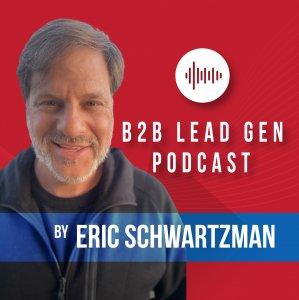B2B Lead Gen Podcast

Google Search Quality Rater Guidelines
Katie Robbert is the CEO of Trust Insights, a marketing analytics consulting firm. She is Google Analytics certified, with a Master of Science in marketing and technological innovation, and has years of experience in SEO and data analytics.
In this episode she talks about Powering Modern SEO with Social Media Data, a white paper her team developed with Talkwalker, a social media analytics and monitoring platform, that talked about powering modern SEO through data from social media.
As Katie pointed out, we may not realize it, but we’re actually doing the hard work for Google in terms of training its AI to understand audio and visual information. Consider Google Photos, for instance. Whenever Google Photos asks us to identify or categorize a photo, we’re actually helping them train their algorithm and the can apply that logic to their test data sets.
https://youtu.be/qf1ao1hNv9I
Search Quality Rater Guidelines
Google’s Search Quality Rating Guidelines highlight the importance of having high-quality main content, meaning the content that you specifically wrote about the topic, which is found in the main section of your page (and not, say, the sidebars or navigation panels).
When it comes to fact-checking and determining the accuracy of online content, it’s easier for Google to check for historical and scientific accuracy than it is to check for truth, which still can’t be algorithmically verified.
Katie mentions another potential issue, “New, cutting-edge research is always the hardest for an algorithm such as Google to understand, because again, it needs that test data, that historical data, in order to say, ‘Yes, this is a thing.’” An example of this is Google Scholar. Without any precedent in the form of existing studies or previous mentions, Scholar will have nothing to validate new research against, and will struggle with it (regardless of whether it’s accurate or not).
Trademarking and Zero Click Searches
On the subject of trademarking B2B content marketing materials, context matters. Not every use of a trademarked phrase counts as infringement. As an example, Katie mentions her friend Gini Dietrich, who developed the PESO (paid, earned, owned, and shared media) model for communicators. According to Katie, she constantly has to contact companies who use the term without giving her due credit for it. “It's just being aware of the original source of a term.”
Hashtags, however, are a different matter. Casual terms are up for grabs for trademarking, which certain “internet influencers” have been taking advantage of. “They are constantly trying to trademark certain phrases, casual phrases that we all use all the time, so that every time somebody uses them, they get paid some sort of fee for us using that term,” explains Katie.
https://youtu.be/iUdwMwtlnEY
And that's where it starts to get into sort of that ridiculous area of trademarking terms and phrases, and then what you as an SEO person can do about getting around that.” If you want practical guidance on how NOT to infringe on the intellectual property rights as well as how to protect trade secrets, copyrights, trademarks and patents, and respect the intellectual property rights of others, check out my free course on Digital Intellectual Property Rights Management.
In our previous interview, Katie talked about Google Passages, and how it can take away views from a website. Passages is just one of the many parts of the Google ecosphere that help it keep users within its “bubble.” As Google doesn’t want users to exit the experience,






 Visit Podcast Website
Visit Podcast Website RSS Podcast Feed
RSS Podcast Feed Subscribe
Subscribe
 Add to MyCast
Add to MyCast